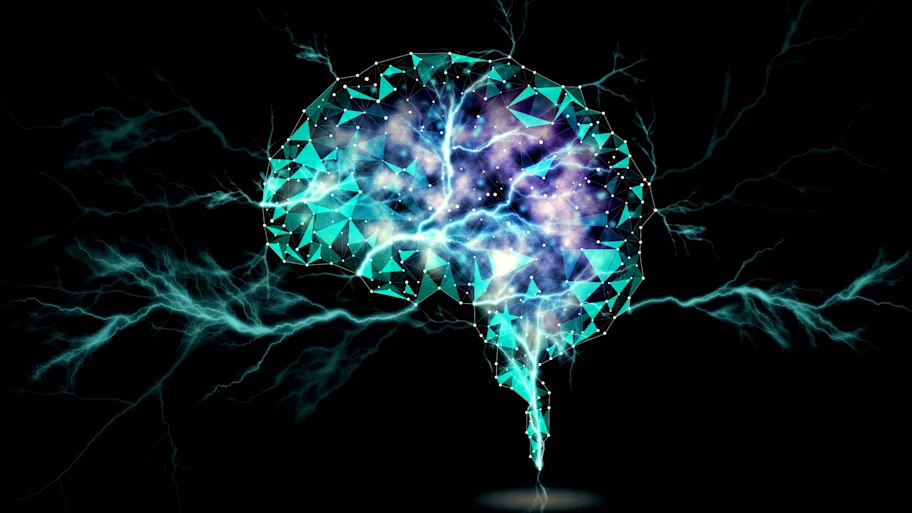
- Science news
- Robotics and AI
- ‘My dream is for AI and brain organoids to explore each other’s capabilities’
‘My dream is for AI and brain organoids to explore each other’s capabilities’
by Liad Hollender, Frontiers science writer

Image: Prof Thomas Hartung
Over just a few decades, computers shrunk from massive installations to slick devices that fit in our pockets. But this dizzying trend might end soon, because we simply can’t produce small enough components. To keep driving computing forward, scientists are looking for alternative approaches. An article published in Frontiers in Science presents a revolutionary strategy, called organoid intelligence.
This emerging scientific field aims to create biocomputers where lab-grown brain organoids (three-dimensional brain-cell cultures) serve as biological hardware. According to the authors, this technology could also drive progress in biomedicine, providing unprecedented insight into the human brain.
To learn more about this exciting new field, we interviewed the senior author of the article, Prof Thomas Hartung. He is the director of the Center for Alternatives to Animal Testing in Europe (CAAT-Europe), and a professor at Johns Hopkins University’s Bloomberg School of Public Health.
How do you define organoid intelligence?
Reproducing cognitive functions – such as learning and sensory processing – in a lab-grown human-brain model.
How did this idea emerge?
I’m a pharmacologist and toxicologist, so I’m interested in developing medicines and identifying substances that are dangerous to our health, specifically those that affect brain development and function. This requires testing – ideally in conditions that mimic a living brain. For that reason, producing cultures of human brain cells has been a longstanding aim in the field.
This goal was finally realized in 2006 thanks to a groundbreaking technique developed by John B. Gurdon and Shinya Yamanaka, who received a Nobel prize for this achievement in 2012. This method allowed us to generate brain cells from fully developed tissues, such as the skin. Soon after, we began mass producing three-dimensional cultures of brain cells called brain organoids.
People asked if the organoids were thinking, if they were conscious even. I said: “no, they are too tiny. And more importantly, they don’t have any input nor output, so what would they be thinking about?” But later I began wondering: what if we changed this? What if we gave the organoids information about their environment and the means to interact with it? That was the birth of organoid intelligence.
How would you know what an organoid is ‘thinking’ about?
We’re building tools that will enable us to communicate with the organoids – send input and receive output. For example, we developed a recording/stimulation device that looks like a mini EEG-cap that surrounds the organoid. We’ve also been working on feeding biological inputs to brain organoids, for instance, by connecting them to retinal organoids, which respond to light. Our partner and co-author Alysson Muotri at the University of San Diego is already testing this approach by producing systems that combine several organoids.
My dream is to form a channel of communication between an artificial intelligence program and an OI system that would allow the two to explore each other’s capabilities. I imagine that form will follow function – that the organoid will change and develop towards creating meaningful inputs. This is a bit of philosophy, but my expectation is that we’ll see a lot of surprises.
What uses do you envision for organoid intelligence?
In my opinion, there are three main areas. The first is fundamental neuroscience – to understand how the brain generates cognitive functions, such as learning and memory. Even though current brain organoids are still far from being what one might call intelligent, they could still have the machinery to support basic cognitive operations.
The second area is toxicology and pharmacology. Since we can now produce brain organoids from skin samples, we can study individual disease characteristics of patients. We already have brain-organoid lines from Alzheimer’s patients, for example. And even though these organoids were made from skin cells, we still see hallmarks of the disease in them.
Next, we would like to test if there are also differences in their memory function, and if so, if we could repair it. We can also test whether substances, such as pesticides, worsen cognitive deficits, or cause them in brain organoids produced from healthy subjects. This is a very exciting line of research, which I believe is nearly within reach.
The third area is computing. As we laid out in our article, considering the brain’s size, its computational power is simply unmatched. Just for comparison, a supercomputer finally surpassed the computational power of a single human brain in 2022. But it cost $600m and occupies 680 square meters [about twice the area of a tennis court].
We’re also reaching the limits of computing. Moore’s Law, which states that the number of transistors in a microchip doubles every two years, has held for 60 years. But soon we won’t be able to physically fit more transistors into a chip. A single neuron, on the other hand, can connect to up to 10,000 other neurons – this is a very different way of processing and storing information. Through OI, we hope that we’ll be able to leverage the brain’s computational principles to build computers differently.
How do you intend to tackle ethical issues that might arise from organoid intelligence?
There are many questions that we face now, ranging from the rights of people over organoids developed from their cells, to understanding whether OI is conscious. I find this aspect of the work fascinating, and I believe it’s a fantastic opportunity to investigate the physical manifestation of concepts like sentience and consciousness.
We teamed up with Jeffrey Kahn of the Bloomberg School of Public Health at Johns Hopkins University at the very beginning, asking him to lead the discussion around the ethics of neural systems. We have come up with two main strategies. One is called embedded ethics: we want ethicists to closely observe the work, take part in the planning, and raise points early on. The second part focuses on the public – we intend to share our work broadly and clearly as it advances. We want to know how people feel about this technology and define our research plan accordingly.
How far are we from the first organoid intelligence?
Even though OI is still in its infancy, past work shows that it’s possible. A study by one of our partners and co-authors – Brett Kagan of the Cortical Labs – is a recent example. His team showed that a standard brain cell culture can learn to play the video game Pong. They are already experimenting with brain organoids, and I would say that replicating this with organoids already fulfills what we call OI.
Still, we are a long way from realizing OI’s full potential. When it becomes a real tool, it will look very different from these first baby steps we are taking now. The important thing is that it’s a starting point. I see this like sequencing the first genes of the human genome project: the enabling technology is in our hands, and we’re bound to learn a lot on the way.






